Uni-T UT70D Bruksanvisning
Uni-T
Multimeter
UT70D
Läs gratis den bruksanvisning för Uni-T UT70D (48 sidor) i kategorin Multimeter. Guiden har ansetts hjälpsam av 19 personer och har ett genomsnittsbetyg på 4.6 stjärnor baserat på 10 recensioner. Har du en fråga om Uni-T UT70D eller vill du ställa frågor till andra användare av produkten? Ställ en fråga
Sida 1/48

Table of Contents
Title Page
Accuracy Specifications
A. AC Voltage
B. DC Voltage
C. Continuity, Resistance &
Conductance Test
D. Capacitance
E. Diodes Test
F. DC Current
G. AC Current
H. Frequency & Duty Cycle
Maintenance
A. General Service
B. Testing the Fuses
C. Replacing the Battery
D. Replacing the Fuses
RS232C Serial Port
A. RS232C Port Cable
B. Setting of RS232C Serial Ports
C. System Requirements for Installing the
UT70D Interface Program
This Operating Manual covers information on safety and
cautions. Please read the relevant information carefully
and observe all the Warnings and Notes strictly.
Warning
To avoid electric shock or personal injury, read the
"Safety Information" and "Rules for Safe Operation"
carefully before using the Meter.
Your Multimeter is an intelligent digital one, a precise
instrument with a resolution of 80,000 counts and up-to
-date automatic computer calibrating function. High
resolution A/D converter and micro-controller data
processing technique is adopted in the Meter, featured
with intelligence, high precision and multi-functions. The
Meter can be widely used in laboratory field service,
domestic and other applications. All the functions and
ranges have full overload protection.
In addition to the conventional measuring functions, it is
equipped with a RS232C standard serial port for easy
connection with computer to realize macro recording and
monitoring and capture of transient dynamic data,
displaying change of waveform during the measurement,
providing data and evidence to engineering technicians
for scientific research. This is also a highly applied digital
multimeter of good performance with display backlight.
Open the package case and take out the Meter. Check
the following items carefully to see any missing or
damaged part:
Item Description Qty
1 English Operating Manual 1 piece
2 Test Lead 1 pair
3 Test Clip 1 piece
9V Battery (NEDA 1604,6F22
or 006P) (installed)
5 RS232C Interface Cable 1 piece
CD-ROM (Installation Guide &
Computer Interface Software)
7 Holster 1 piece
8 Tilt Stand 1 piece
1 piece
1 piece
4
6
In the event you find any missing or damage, please
contact your dealer immediately.
Safety Information
CAT. II: Local level, appliance, PORTABLE EQUIPMENT
etc., with smaller transient voltage overvoltages than
CAT. III
CAT. III: Distribution level, fixed installation, with smaller
transient overvoltages than CAT. IV
CAT IV: Primary supply level, overhead lines,
cablesystems etc.
Use the Meter only as specified in this operating manual,
otherwise the protection provided by the Meter may be
impaired.
In this manual, a Warning identifies conditions and
actions that pose hazards to the user, or may damage
the Meter or the equipment under test.
A Note identifies the information that user should pay
attention on.
International electrical symbols used on the Meter and
in this Operating Manual are explained on page 8
Rules For Safe Operation(1)
Warning
To avoid possible electric shock or personal injury,
and to avoid possible damage to the Meter or to the
equipment under test, adhere to the following rules:
Before using the Meter inspect the case. Do not
use the Meter if it is damaged or the case (or part
of the case) is removed. Look for cracks or missing
plastic. Pay attention to the insulation around the
connectors.
Inspect the test leads for damaged insulation or
exposed metal. Check the test leads for continuity.
Replace damaged test leads with identical model
number or electrical specifications before using the
Meter.
Do not apply more than the rated voltage, as marked
on the Meter, between the terminals or between
any terminal and grounding.
The rotary switch should be placed in the right
position and no any changeover of range shall be
made during measurement is conducted to prevent
damage of the Meter.
Never working at an effective voltage over 60V in
DC or 30V rms in AC for there is danger of electric
shock.
Use the proper terminals, function, and range for
your measurements.
Do not use or store the Meter in an environment of
high temperature, humidity, explosive, inflammable
and strong magnetic field. The performance of the
Meter may deteriorate after dampened.
When using the test leads, keep your fingers behind
the finger guards.
Disconnect circuit power and discharge all high-
voltage capacitors before testing resistance,
continuity, diodes, current or capacitance.
Before measuring current, check the Meter's fuses
and turn off power to the circuit before connecting
the Meter to the circuit.
Replace the battery as soon as the battery indicator
appears. With a low battery, the Meter might
produce false readings that can lead to electric
shock and personal injury.
Remove test leads and RS232C interface cable
from the Meter and turn the Meter power off before
opening the Meter case.
When servicing the Meter, use only the same model
number or identical electrical specifications
replacement parts.
The internal circuit of the Meter shall not be altered
at will to avoid damage of the Meter and any accident.
Soft cloth and mild detergent should be used to
clean the surface of the Meter when servicing. No
abrasive and solvent should be used to prevent the
surface of the Meter from corrosion, damage and
accident.
The Meter is suitable for indoor use.
Turn the Meter off when it is not in use and take
out the battery when not using for a long time.
Constantly check the battery as it may leak when
it has been using for some time, replace the battery
as soon as leaking appears. A leaking battery will
damage the Meter.
Rules For Safe Operation(2)
The Meter Structure (see figure 1)
3
4
5
6
8
8
9
34
35
36
37
37
37
38
38
38
39
39
40
42
42
43
44
45
46
46
46
47
Overview
Unpacking Inspection
Safety Information
Rules For Safe Operation
International Electrical Symbols
The Meter Structure
Rotary Switch
Functional Buttons
Display Symbols
Measurement Ranges
Selecting a Measurement Range
Manual Ranging and Autoranging
Measurement Operation
AC Voltage Measurement
DC Voltage Measurement
DC Milivolt Measurement
Measuring Resistance / Conductance,
Capacitance and Continuity
Testing Diodes
DC or AC Current Measurement
MAX/MIN Recording Mode
PEAK MAX/MIN Mode
Operation of Hold Mode
Operation of Auto Hold Mode
The Use of Relative Value and Relative
Percentage Value Mode
Turning on the Display Backlight
Analogue Bar Graph Display
Sleep Mode
General Specifications
10
12
14
14
14
16
16
17
18
19
23
24
26
29
31
32
32
33
34
Frequency & Duty Cycle Measurement
CE Version: The Meter complies with the standards
IEC61010-1:in pollution degree 2, overvoltage category
CAT III 1000V, CAT IV 600V and double insulation .
UL Version: The Meter complies with the standards UL61010B-1,
in pollution degree 2, overvoltage category CAT II 1000V
and double insulation.
Produktspecifikationer
| Varumärke: | Uni-T |
| Kategori: | Multimeter |
| Modell: | UT70D |
| Produkttyp: | Digital multimeter |
| Vikt: | 600 g |
| Grundläggande noggrannhet (växelström): | 0.5%+40 |
| Grundläggande noggrannhet (växelspänning): | 0.8%+20 |
| Grundläggande noggrannhet (kapacitans): | 2%+3 |
| Grundläggande noggrannhet (frekvens): | 0.02%+1 |
| Grundläggande noggrannhet (motstånd): | 0.3%+40 |
| Diodtest: | Ja |
| Grundläggande noggrannhet (likström): | 0.2%+40 |
| Produktstorlek (BxDxH): | 90 x 40 x 195 mm |
| DC-spänningsområde: | 0.08 - 1000 V |
| AC-spänningsområde: | 0.8 - 1000 V |
| Kapacitansområde: | 1 - 100000 nF |
| Frekvensområde: | 1 - 1000 kHz |
| Batterispänning: | 9 V |
| Displaytyp: | LCD |
| Indikator för låg batterinivå: | Ja |
| DC strömområde: | 0.08 - 10 A |
| AC-strömområde: | 0.08 - 10 A |
| Grundläggande noggrannhet (likspänning): | 0.05%+10 |
| Statistik funktion: | Average, Maximum, Minimum |
| Data håller: | Ja |
Behöver du hjälp?
Om du behöver hjälp med Uni-T UT70D ställ en fråga nedan och andra användare kommer att svara dig
Multimeter Uni-T Manualer
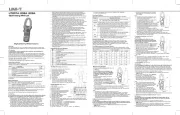
10 September 2025
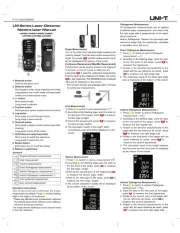
10 September 2025
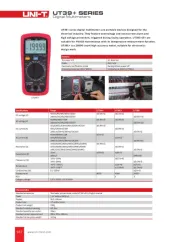
10 September 2025
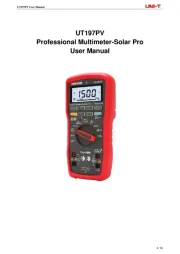
6 Augusti 2025

19 Juni 2025

18 Juni 2025

18 Juni 2025
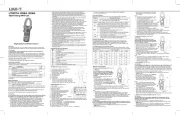
18 Juni 2025
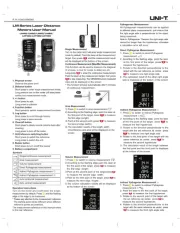
18 Juni 2025

16 Juni 2025
Multimeter Manualer
- Amiko
- Laserliner
- Wiha
- Projecta
- Skandia
- Tacklife
- Somogyi
- Testec
- Draper
- Biltema
- Kewtech
- Keithley
- PeakTech
- Milwaukee
- CEM
Nyaste Multimeter Manualer
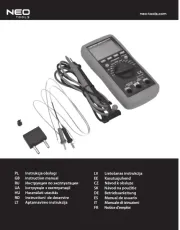
20 Oktober 2025
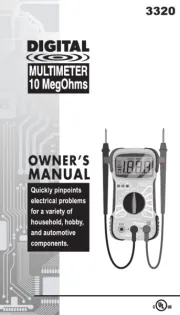
13 Oktober 2025
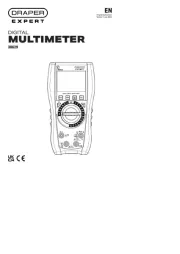
7 Oktober 2025
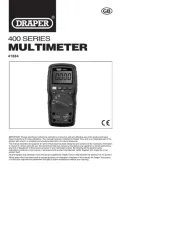
7 Oktober 2025
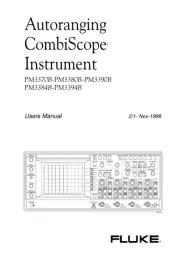
26 September 2025

26 September 2025
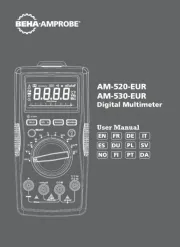
26 September 2025
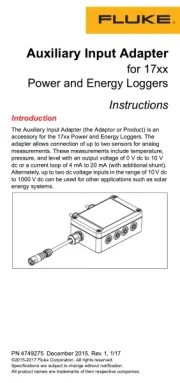
26 September 2025
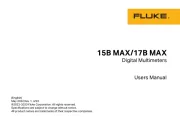
26 September 2025
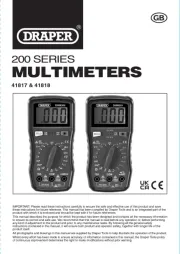
26 September 2025